In the early decades of the 20th century, the imperial powers organized colonial exhibitions to celebrate the riches that development of far-flung lands brought home to the parent country. A century later, the early decades of the 21st century are a time of decolonizing exhibitions, in which that brutal history and toxic legacy are examined in a new light. Putting Africa and its diaspora at the center of the Venice Architecture Biennale, as chief curator Lesley Lokko has done for the 2023 edition, is part of that process of reexamination, the first time in its four-decade existence that this prestigious architecture event has focused on the world’s second-largest continent and the descendants of its displaced peoples.
As Lokko, who is Scottish-Ghanaian, pointed out, decolonization and decarbonization are linked issues. “The Black body, the African body, was Europe’s first unit of energy, the first unit of labor,” she said at the opening-day press conference. “So I think for many Africans and people in the diaspora, that relationship between colonization and exploitation of resources, which includes human resources, is physical, tangible, and corporeal. It’s with that in mind that I approached these two topics, to understand each not just as a process, but the interconnections that are often hidden between them.”
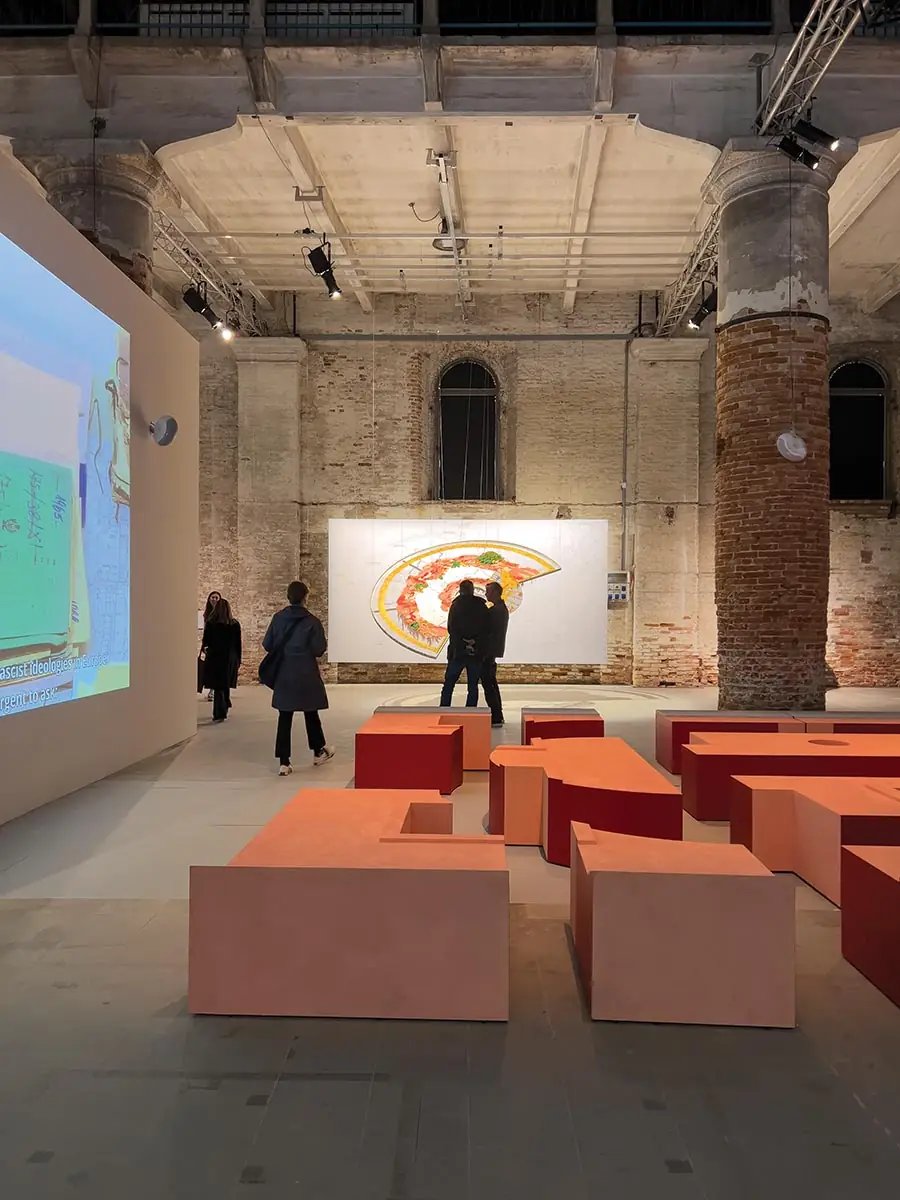
DAAR’s building-facade fragments. Photo © Roland Halbe, click to enlarge.
Under the title The Laboratory of the Future, this 18th International Architecture Exhibition is once again divided between two sites, the Giardini and the Arsenale, with a mix of invited exhibitors and national pavilions in both. Following Lokko’s direction of travel, the Biennale jury awarded Golden Lions to two projects that examine colonialist attitudes on the part of governments toward their own citizens. The first, by academic duo Sandi Hilal and Alessandro Petti as DAAR (Decolonizing Architecture Art Research), is an Arsenale display intended to “profane the rural settlement of Borgo Rizza” near Syracuse, a 1940 government project to “reclaim, modernize, and repopulate Sicily,” which “the Fascist regime considered backward, underdeveloped, and ‘empty.’ ” A traveling installation, DAAR’s piece consists of a video presentation accompanied by a full-scale reproduction of Borgo Rizza’s main building facade fragmented into “15 multipurpose modules” that, in this case, serve as seating. The second Golden Lion went to the Brazilian Pavilion in the Giardini, where Gabriela de Matos and Paulo Tavares have curated Terra (Earth), a series of displays examining issues such as the colonial act of building Brasília on “empty”—but in fact ancestral—lands, the “ecological contemporaneity of Indigenous techniques” with respect to the Amazonian dark earths that result from traditional agroforestry, and the idea that Indigenous and African-Brazilian conceptions of territory “are radically distinct from modern colonial constructions,” pointing to “belonging, cultivation, right, reintegration, and reparation” and thus to a future that “is ancestral.”
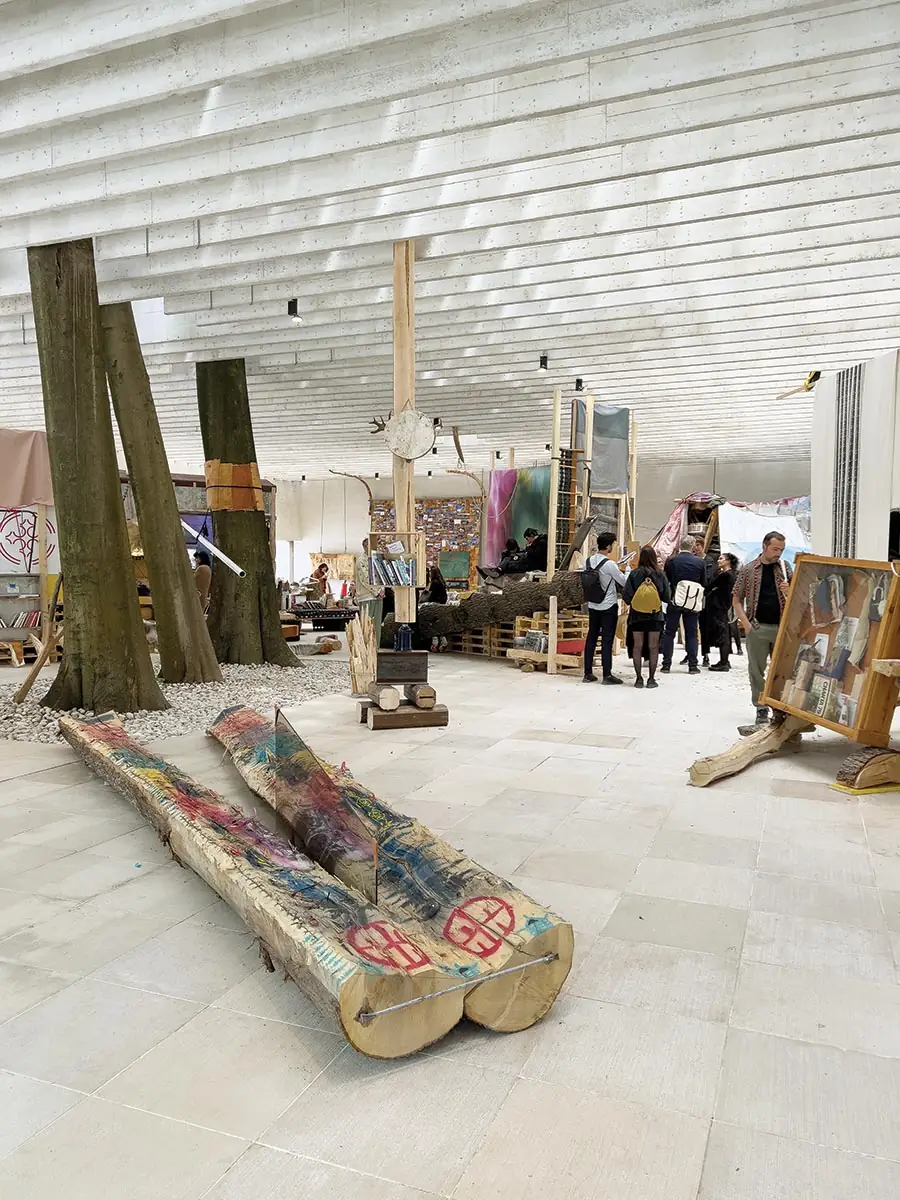
The Nordic Pavilion’s Sámi exhibition. Photo © Roland Halbe
Other national pavilions take a similar approach: Canada attacks “housing alienation,” pleading for a decommodification of homes and land more in tune with Indigenous practice; Australia thinks about ways of mending the “double rupture” on which the country is built—“the expropriation of First People’s lands and the displacement of settler populations from their ancestral motherlands”; while, over at Sverre Fehn’s Nordic Pavilion, architect Joar Nango—a member of the Sámi peoples, whose traditional territory covers the northern parts of Norway, Sweden, and Finland, plus Russia’s Kola Peninsula—has installed his witty Girjegumpi: The Sámi Architecture Library, a nomadic project that highlights what Indigenous Arctic culture might bring to architectural discourse today. The curators contacted the relevant Russian authorities regarding their Sámi territory, to discuss a possible collaboration, but received no response; just across the way, the Russian Pavilion remained closed and boarded up, with no comment from either Moscow or the Biennale management.
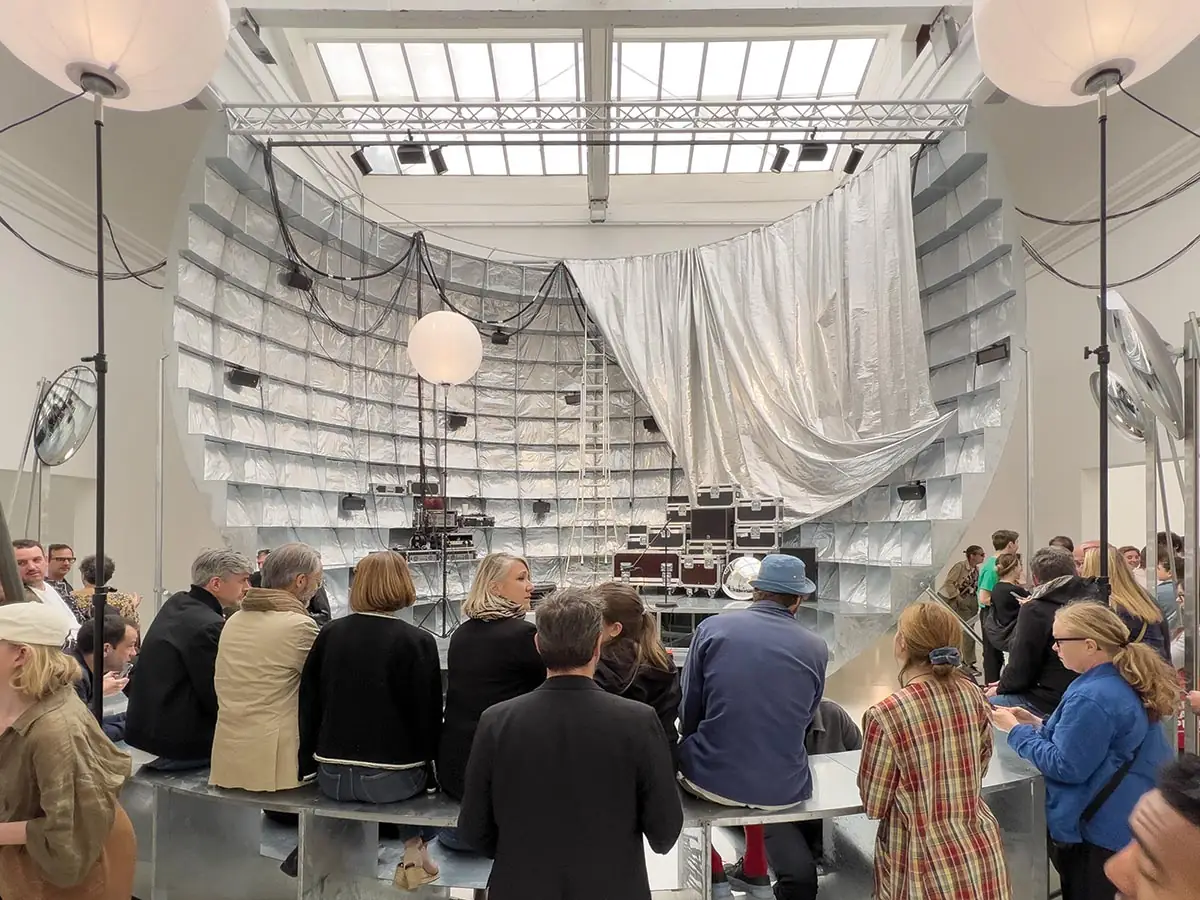
A silvery sphere evoking Boullée took center stage inside the French Pavilion. Photo © Roland Halbe
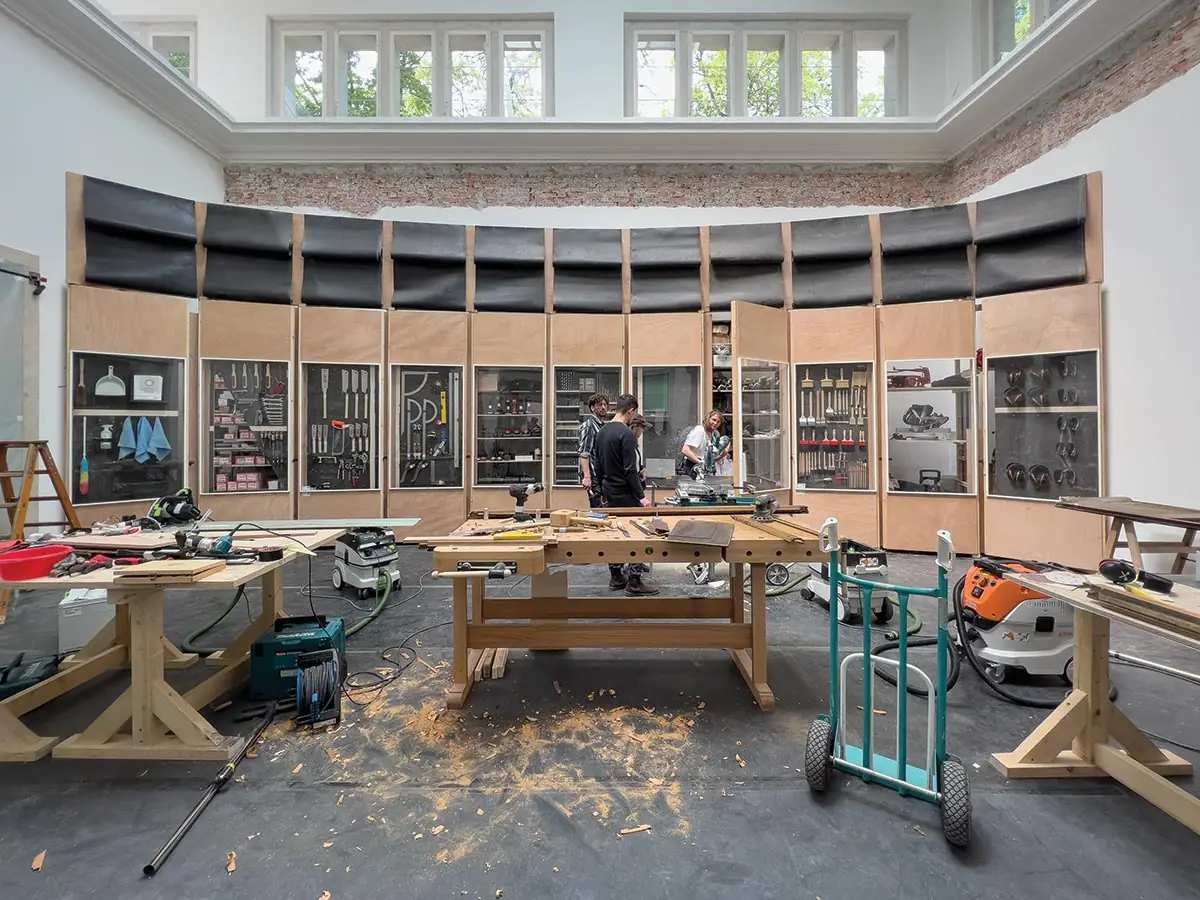
Focusing on maintenance, the German Pavilion incorporates work that was presented there for the Art Biennale in 2022. Photo © Roland Halbe
As usual, the exhibits on offer in Venice are vast and multifarious, requiring weeks to be looked at in detail, especially in light of Lokko’s injunction to prioritize film and screens over models and installations (a more sustainable option, she claims, though that seems debatable). And, again as usual, quality is highly variable, though much is worthy of attention. Standouts include the French Pavilion, which invites Biennale-goers to a ball on a stage within a silvery sphere that evokes both disco and Neoclassical architect Boullée, with Franco-Algerian drag queens queering up and decolonizing the country’s Enlightenment legacy. Germany focuses on recycling and Britain celebrates multiculturalism, while the U.S. looks at plastic, “developed in the United States as a revolutionary material” and now a major global problem. Meanwhile, with his Arsenale installation Xholobeni Yards, Columbia GSAPP dean Andrés Jaque examines another American transnational transgression, highlighting how the mineral extraction required to build New York’s Hudson Yards has caused lasting pollution and environmental damage elsewhere, notably in South Africa.
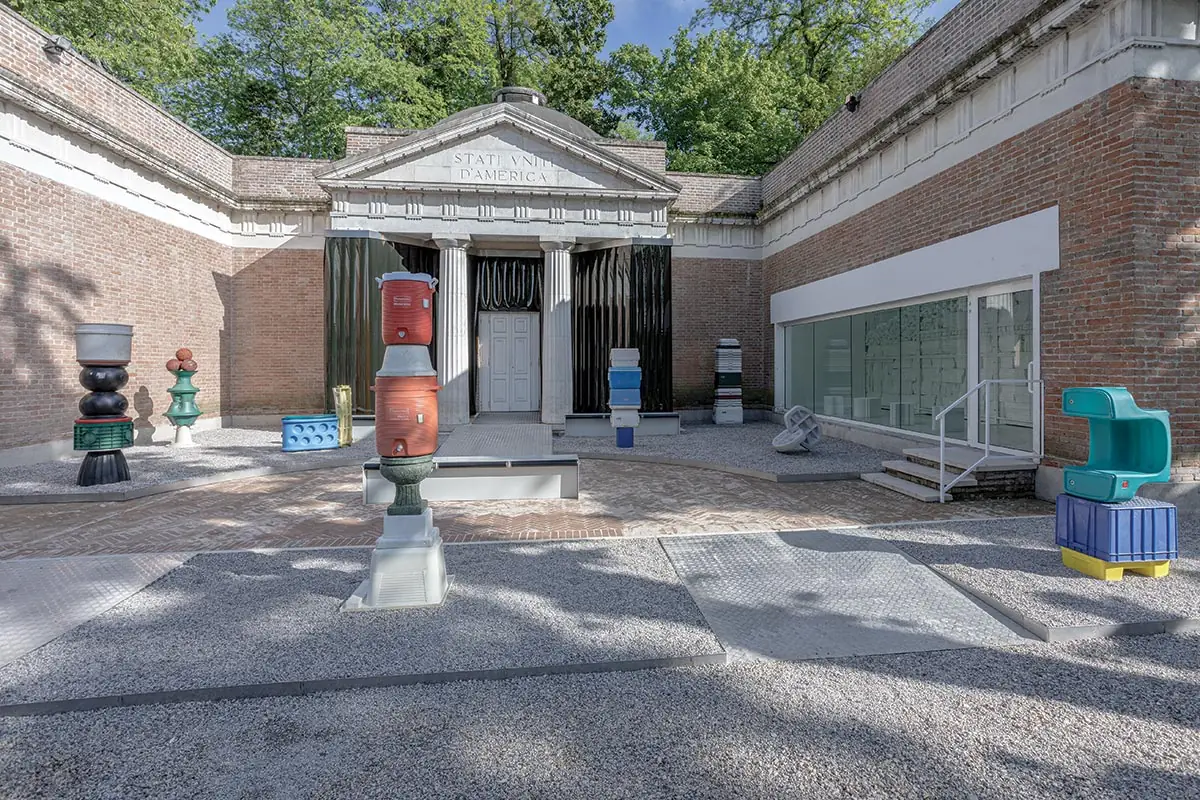
1
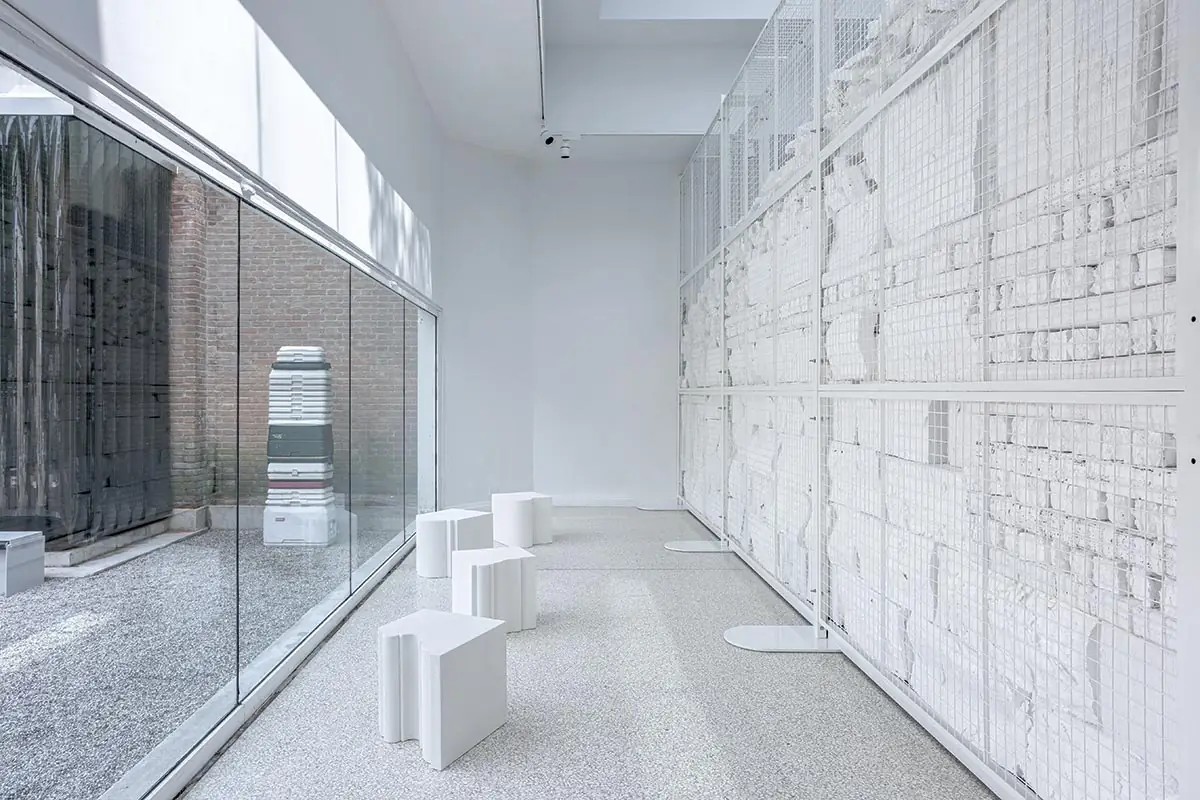
2
Everlasting Plastics was presented at the United States Pavilion (1). It included Ang Li’s installation of densified expanded polystyrene waste blocks (2).Photos © Andrea Ferro
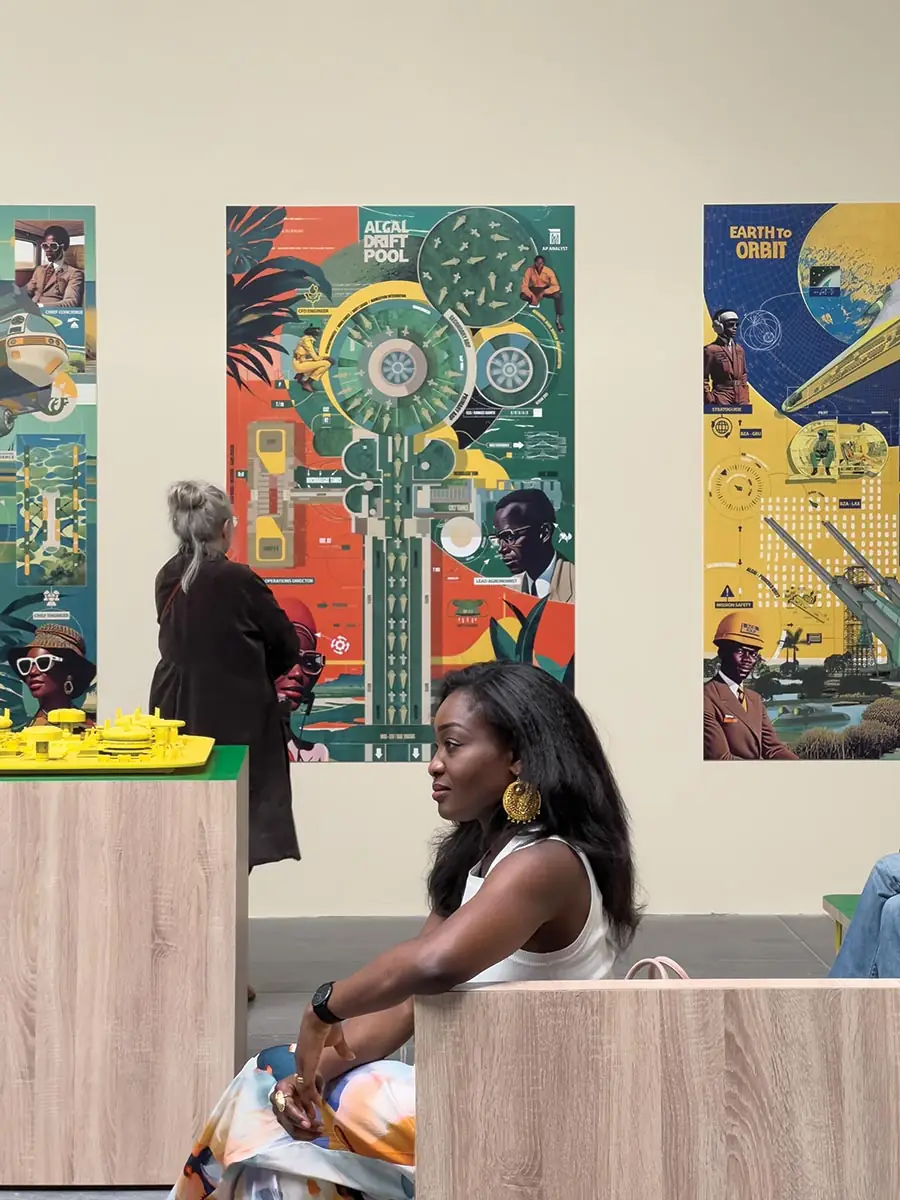
Inside the Giardini’s central pavilion. Photo © Roland Halbe
With the help of AI (a recurrent though not yet major theme at this year’s Biennale), U.S.-based, Nigerian-born architect-turned-artist Olalekan Jeyifous has filled the upper hall of the Giardini’s Padiglione Centrale with his vision for a joyous retro-futurist fantasy of rapid travel and renewable-energy generation, All-Africa Protoport, that imagines Indigenous knowledge being used to repair colonial damage. (No mention here or anywhere else of China’s outsize investment in Africa, derided by detractors as “debt-trap diplomacy.”) In the Arsenale, Australian architect-turned-filmmaker Liam Young has also used computer-generated imagery in The Great Endeavor, a more ambiguously utopian—or is it actually dystopian?—installation that shows mesmerizing moving images of a future filled with monumental machinery for trapping CO₂. “First-world nations have colonized the atmosphere with their greenhouse-gas emissions,” reads the label; “The ‘great endeavor’ to capture all this carbon will involve the largest engineering project in human history.” Nearby, we reach peak bleak with architect Alison Killing’s Investigating Xinjiang’s Network of Detention Camps, a collaboration with journalists that uses satellite imagery, 3D modeling, witness statements, and standard state jail blueprints to visualize the concentration facilities in which China is believed to have imprisoned over 1 million people of its Muslim minorities.
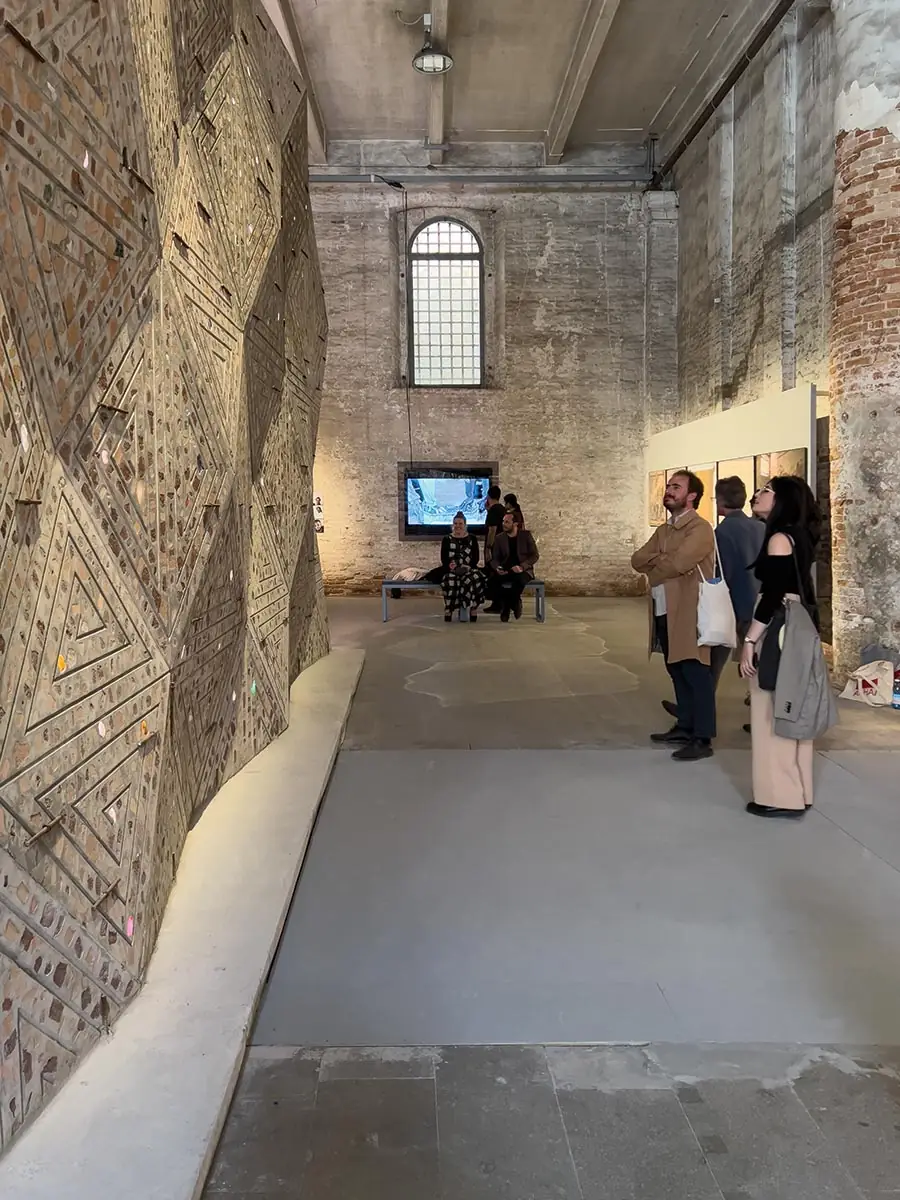
Gloria Cabral and Sammy Baloji with Cécile Fromont wove a tapestry of bricks made of mining waste, highlighting the value of debris. Photo © Roland Halbe
On a far more upbeat note, Arinjoy Sen’s beautiful Bengali Song caught many an eye: a large textile triptych embroidered by women from the SHE Kantha collective in India, it shows an ecological building narrative based on Marina Tabassum Architects’ Khudi Bari (“little house”), a quickly assembled (and disassembled) wood house that can be mounted on stilts to withstand annual flooding. Berlin-based Burkinabé-born Pritzker-winner Francis Kéré frames the housing question differently: what, his installation asks, can we learn from how people live on a continent (Africa) that is responsible for just 4 percent of the world’s greenhouse-gas emissions? And how can today’s West African building culture be revitalized by that of the past to produce even more pertinent results? Barcelona-based Flores & Prats turn to the past too, displaying their process in an installation that considers the poetics of adaptive reuse—memory, phantoms, and the right to inherit. And ghosts also appear in Gender & Geography, an entire Arsenale section dedicated to women’s voices. In Of all the gin joints in all the towns in all the world . . ., London-based Ines Weizman, founder of the Center for Documentary Architecture, seeks the specter of Josephine Baker in North Africa and the Middle East, documenting the loci where the Franco-American performer engaged in acts of entertainment and espionage as she traveled alongside the Allied troops in World War II. Meanwhile, with Embodiments: Port of Sihr—Final Act, 31-year-old South-African architect Gugulethu Sibonelelo Mthembu rewrites the story of Aicha Qandisha—the archetypal shape-shifting succubus—to question “fears and biases toward the power and representation of women.” Starting from the etymology of “glamour” as implying magic and veiling, she projects new spatial narratives for Aicha onto diaphanous textile screens, to haunting effect.
As can be seen from this (tiny) selection, Lokko’s intelligent Venice curation steps deftly round the “let’s save the world” trap fallen into by some recent architecture biennials and triennials. Dosing hope and despair in equal measure, it does not pretend to have all the answers but certainly asks important questions, while the intercontinental, intergenerational conversations it begets (Africa is, after all, an overwhelmingly young place) may prove far more fertile than the limited reach of its Laguna presence.
Given the promise of new voices and fresh perspectives, it’s fair to say that this was one of the most eagerly anticipated Biennale editions in a long time—and, given those high expectations, it’s inevitable it would fail to fulfill them all. Chief among the naysayers is, predictably, ZHA principal Patrik Schumacher, who for years has been complaining that Venice doesn’t actually show any architecture. Reiterating this claim in a Facebook post, he writes: “Assuming Venice to be not only the most important item on our global architectural itinerary, but also representative of our discourse in general: What we are witnessing here is the discursive self-annihilation of the discipline.” Manifestly, Schumacher is not alone in feeling this way, since Lokko spontaneously brought up the issue during the opening press conference. “I’ve heard many responses to the exhibition,” she said, “but one in particular stands out. A journalist remarked, ‘It seems to stop short of architecture.’ Whilst I appreciate and understand the comment, I believe the opposite is true: it is our conventional understanding of architecture that stops short.” You have until November 26 to decide for yourselves.



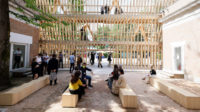
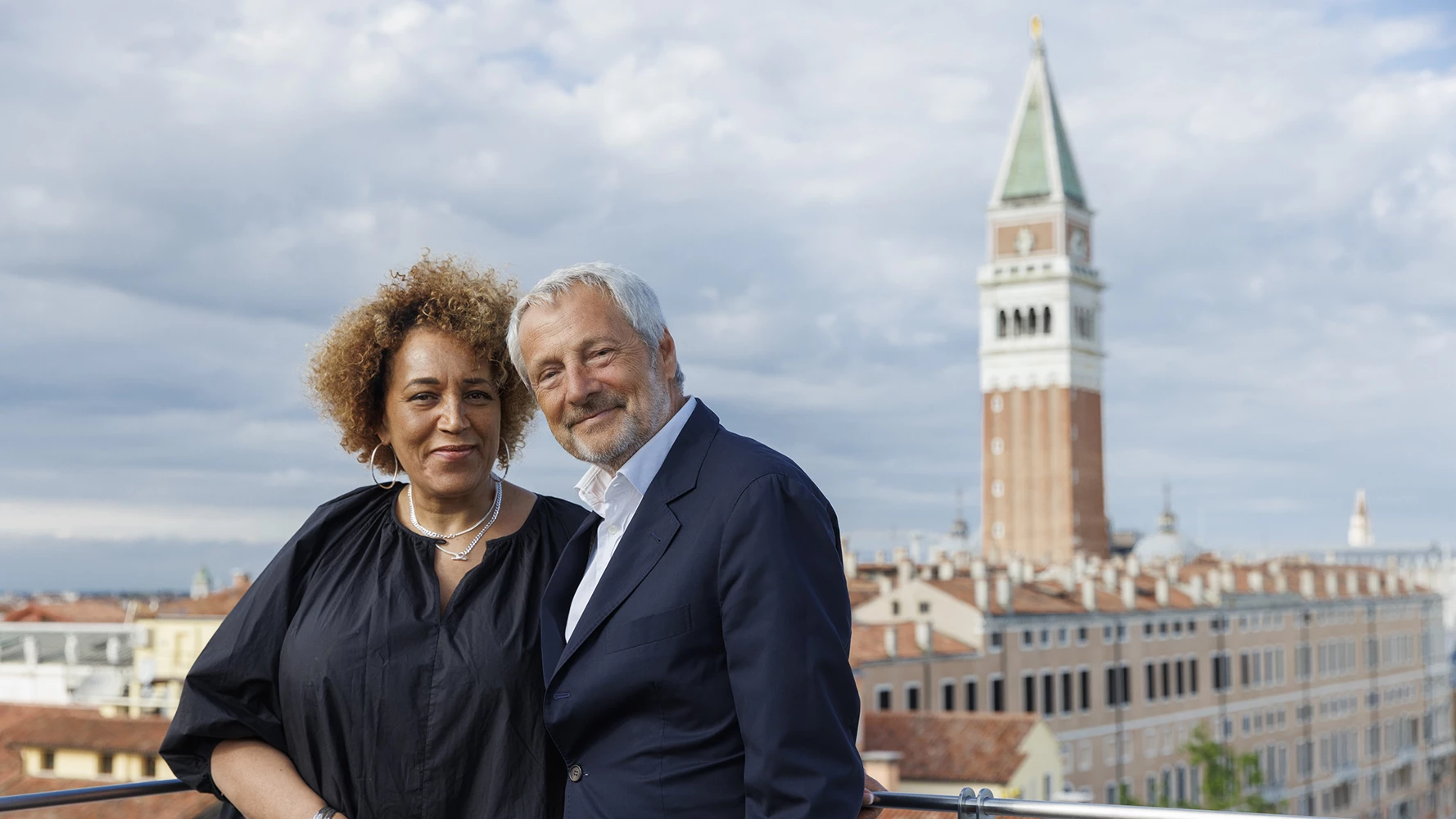
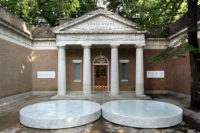
Post a comment to this article
Report Abusive Comment